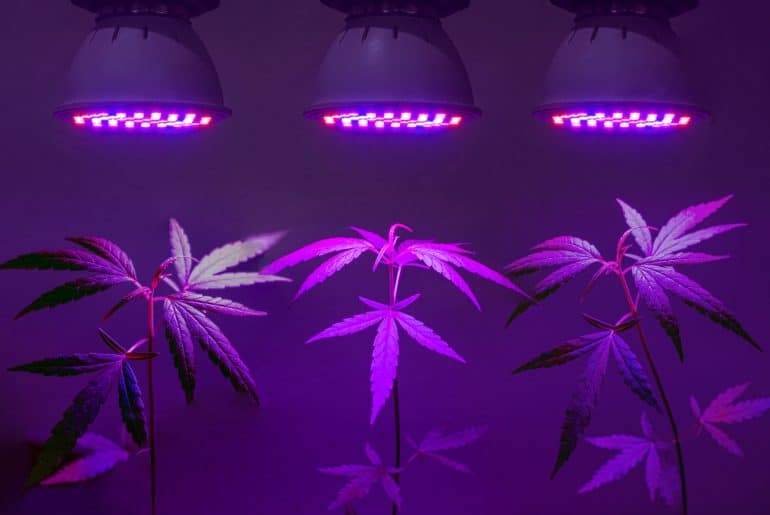If you are lucky enough to live in an area where it is perfectly legal for you to grow your own weed, then you should take advantage of this.
There’s simply no point in purchasing expensive buds at your local dispensaries when you can grow them yourself for a fraction of the price.
Moreover, growing your own weed is just a really fun project too. That said, there are a variety of items that you will need to get started.
Yes, it might seem like a lot, but you really only have to purchase most of these things one single time, and they’ll then last for many years to come.
Things like planters, buckets, grow lights, heaters, dehumidifiers, and more, should all last for many growth cycles and pay for themselves in no time at all.
Right now, we want to provide you with a comprehensive list of everything you need to start growing weed at home, and it all starts with the right cannabis seeds.
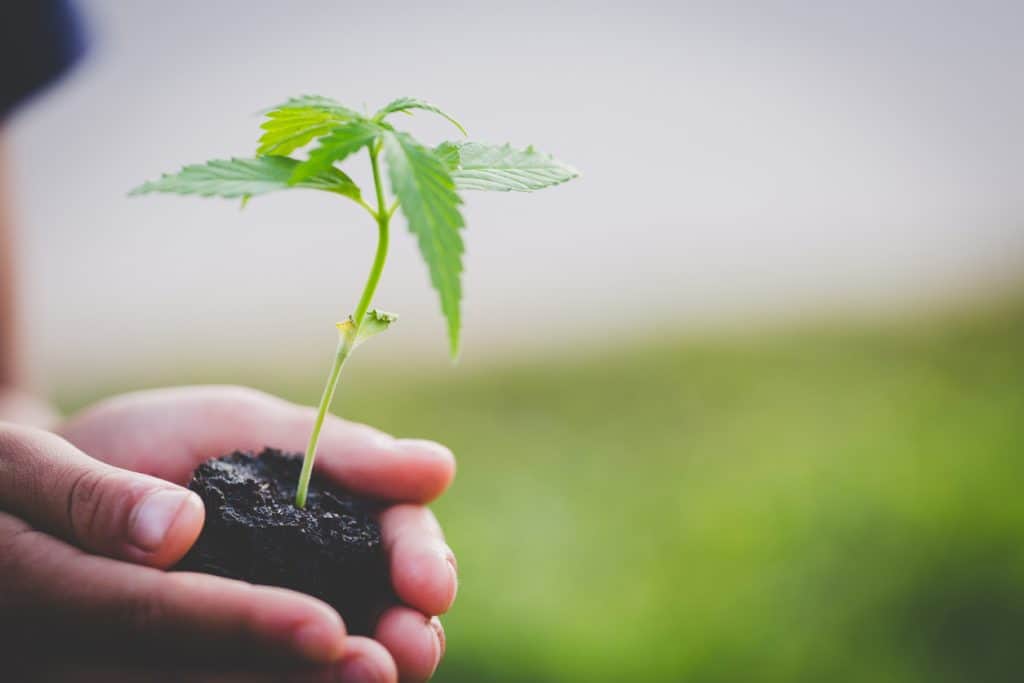
1. The Right Cannabis Seeds
When growing weed indoors, you’ll first need the right kind of seeds. You should be able to purchase cannabis seeds from local dispensaries, seed banks, or even from many online retailers.
We recommend doing some research before you purchase seeds, as which one you get depends on your needs and preferences.
The most important consideration here is how much space you have to spare, especially when it comes to the difference between indica plants and sativa strains.
Sativa strains are usually quite tall and thin, whereas indica plants are shorter and bulkier, therefore making sativa ideal to grow cannabis indoors.
Therefore, if you grow sativa plants, you need a lot of overhead space, but if you grow indica plants, you need a lot of horizontal space. You may also want to consider the overall aroma and effects of the strain in question.
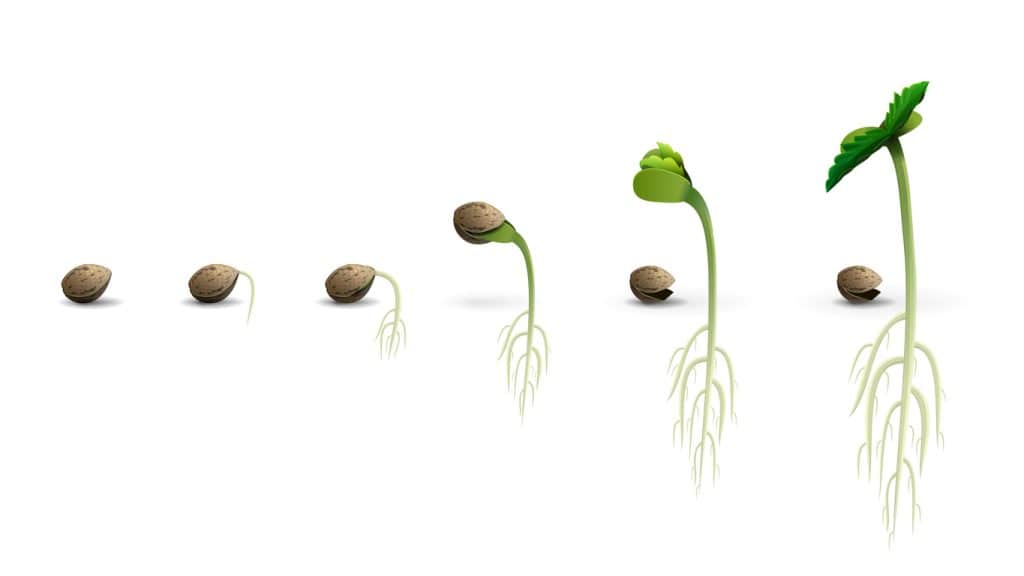
2. Seed Starter Trays for Growing Weed Indoors
To get started growing weed, you first need to germinate seeds to produce plants.
Some people place their seeds inside of a wet paper towel and a plastic bag to germinate, although this is not 100% necessary. You can always just use seed starter trays.
Seed starter trays come in many sizes, and often allow you to start anywhere between 4 and 72 seeds at once.
All you have to do is place some high-quality potting soil in each of the cells, bury the seed about half an inch below the surface, make sure that it’s fairly moist, and then put the lid on top.
Seed starter trays should come with lids, because seeds require a lot of moisture to effectively germinate, and without a lid, too much moisture will escape.
Using seed starter trays is ideal as well, because the plant starts growing right in the soil, and once it is no longer in its seedling stage, you can then transplant it into a larger pot or bucket.
· A seed starter tray like the MIXC Seed Tray Starter Kit is rather perfect for a beginner who wants to grow a few plants. This is a good way to make sure that you start with a healthy plant.

3. The Growing Medium for Marijuana Plants
Where many people get confused is what type of growing medium is best for growing weed at home and for ensuring healthy plants.
There are actually many different types of growing mediums you can go with, with regular potting soil being the most commonly used one, particularly for beginners.
However, there are also other options at your disposal, such as oasis cubes, sawdust, rice hulls, grow stones, vermiculite, and rockwool.
In their own ways, these all make for ideal growing mediums for cannabis plants, so we recommend doing a bit of research into all of them to see which one is best for you.
Some people even choose to use full-fledged hydroponics systems to grow a marijuana plant, which means that there is no soil at all.
The only growing medium in a hydroponic setup is water. However, a hydroponic setup is quite difficult to build, and plants grown in such a setup can be difficult to maintain.
Therefore, for a beginner to grow a marijuana plant, it is recommended that you use basic potting soil, albeit a high-quality option that is rich in nutrients.
Potting soil is cheap, easy to deal with, and will provide your cannabis plants with all of the nutrients they need to get started. You also might want to put that inside of some fabric pots for the best results.
4. Perlite and Vermiculite
Perlite is the commercial name for a naturally occurring siliceous rock, and it kind of looks like very small chunks of Styrofoam.
This is a very good material to add into your regular potting mix.
First, perlite is ideal for speeding up the rooting and germination of seeds, and it also helps improve the overall texture of the soil.
Perlite is ideal because it retains water and releases it slowly over time, therefore allowing for proper aeration and moisture levels.
Perlite is very beneficial for drainage, water retention, and aeration. These are all factors that will help ensure healthy cannabis plants that don’t have damage or waterlogged roots.
At the same time, you may also consider using some vermiculite, which is also designed to help improve moisture retention and drainage.
Many people use both of these materials in combination with high quality potting soil to make sure that the plants are growing in the best possible conditions.
· Here we have a combination product which includes both perlite and vermiculite, which are both ideal to add into your potting soil. This is a good product to use for indoor growers and for growing cannabis outdoors alike. It’s a great cannabis growing medium!
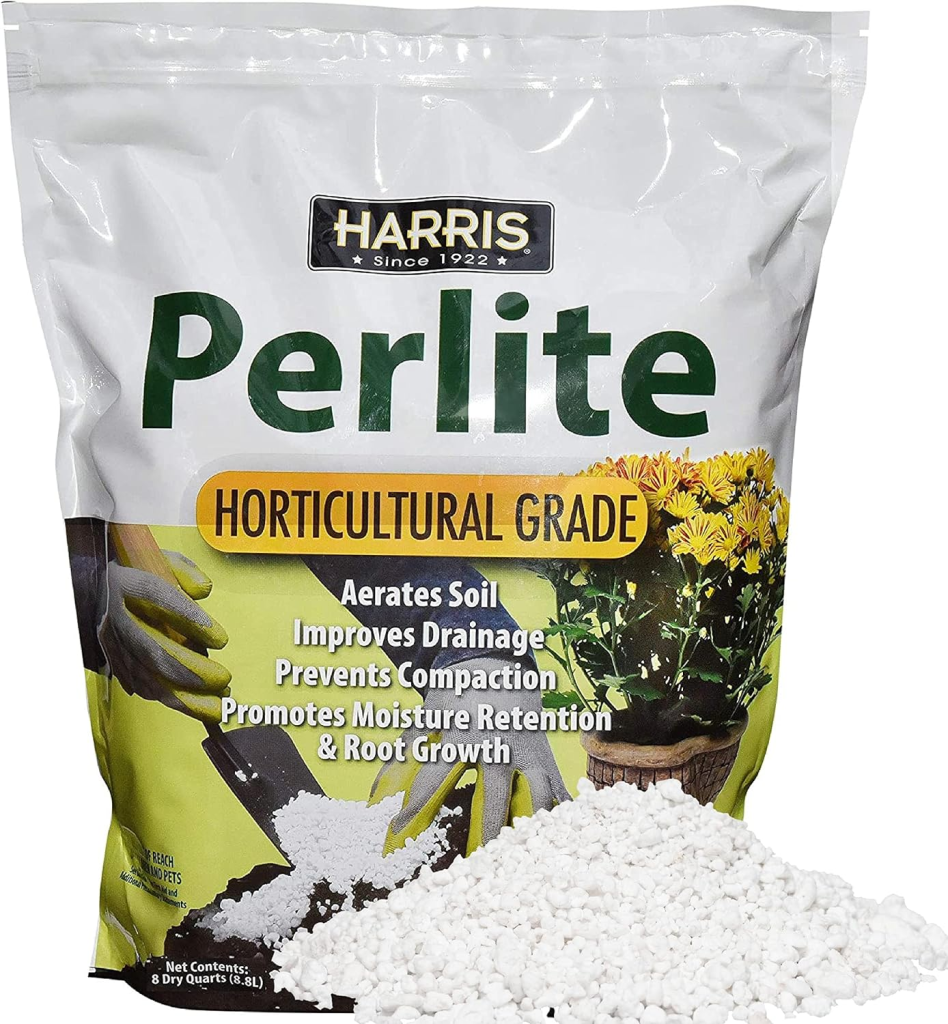
5. Assorted Pots or Buckets
Next, you’ll need something to plant your weed plants in, which usually comes down to using a variety of assorted pots or buckets.
Some people choose to purchase professional planters or pots for their weed plants, whereas other people just use simple buckets.
One recommendation here is to start smaller and then transplant your plants into bigger pots or buckets as they grow.
Allowing the roots of your weed plants to grow to the perimeter of the pots or buckets, and then form a dense root system, will greatly improve the overall health and functionality of the roots.
Therefore, once you have your seedlings grown, and your marijuana plants are in their vegetative state, you should move them to a 2- or 2.5-gallon container.
Then, once the plants have grown substantially, particularly once they enter their flowering stage, you can transfer the plants to 4-gallon containers.
Yes, you can always put your cannabis plants right into the large 4-gallon containers right from the seed trays, although this is not quite as good for the root system.
Interestingly enough, some people also choose to use cloth or canvas pots. As you can imagine, these are soft sided, as opposed to plastic buckets or pots which are hard. Fabric pots can come in quite handy.
These cloth or canvas pots, otherwise known as grow bags, do have some durability issues, and they’re not very portable as well, but they do allow your cannabis plants to get fresh air, something that every grow space can do with.
However, they can be very beneficial for the aeration and drainage of the soil, because the cloth can breathe.
· If you need some parts or buckets to grow your marijuana plants in, you can use basic plastic pots that come in a variety of sizes ranging from 1 to 15 gallons.
6. Nutrients and Fertilizers – The Flowering Stage
Perhaps one of the most important things that you will need to grow marijuana plants at home are the right nutrients and fertilizers.
Cannabis plants need food! The simple reality is that no matter how good the soil is that you purchase, those nutrients will run out rather quickly, within the first few weeks.
Therefore, you need to supplement the proper nutrients in order for your weed plants to grow properly, especially when it comes to growing foliage and flowers.
The three most important nutrients are the NPK nutrients, which stands for nitrogen, phosphorus, and potassium.
If you provide your cannabis plants with these three nutrients, and the right levels of them, you should see your marijuana plants growing big and tall.
The trick to keep in mind here however is that weed plants require different levels of these three nutrients in the vegetative state than they do in the flowering state.
This means that you’ll likely have to purchase two different types of nutrient products, one for both of the growing stages.
If you do not provide your plants with these essential nutrients, although they may grow, they likely won’t grow very large, they may have health issues, and they probably won’t produce a high yield either.
· This Nectar for the Gods fertilizer is a great place to start.
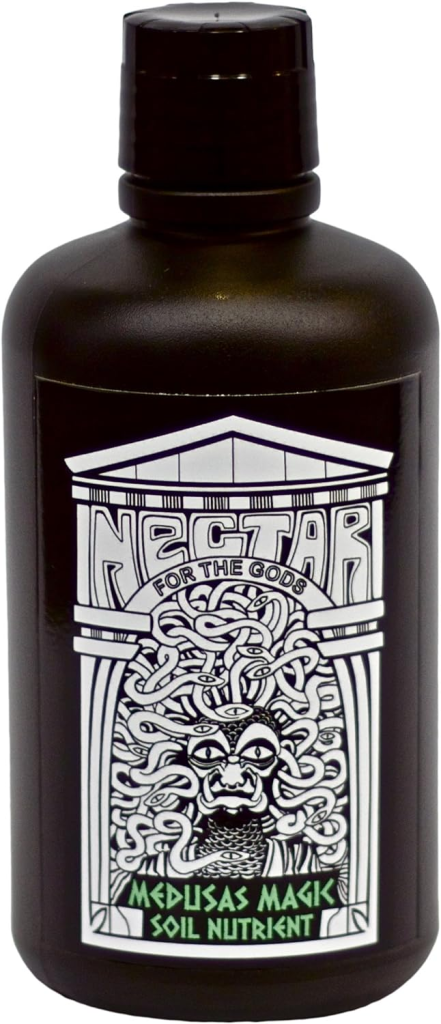
7. Grow Lights
Another important element to grow weed is light. Weed plants need natural sunlight to grow, and if it’s not natural sunlight, then you need to replicate it.
One of the best ways to replicate natural sunlight for your weed plants is by using LED lights. LED lights designed to grow plants are specially made to release all of the most important light wavelengths required for plant growth, particularly blue light and red light.
There are many different types of lights that you can choose, including HPS lights, HID lights, fluorescent lights, and LED (light emitting diode) lights, among others. Some professional growers might choose to go with HPS (high pressure sodium) or HID (high intensity discharge) lights, although these tend to be very expensive, produce a lot of heat, and require a good deal of maintenance as well.
For most beginners, LED lights tend to be the best option. This is true for a variety of reasons. LED grow lights produce a lot of light and don’t produce a lot of heat. LED lights also don’t use very much electricity, and they often result in high yields with high potency buds. LED lights also tend to be the easiest to set up, and often don’t require any special kind of cooling system. However, high intensity discharge lights are used commonly as well, particularly where flowering plants are involved.
As for the power level, although many people think that the more watts the lights have the better, this is not necessarily true. There is such a thing as too much light. The rule of thumb with cannabis plants is to provide them with anywhere between 20 and 40 watts per square foot.
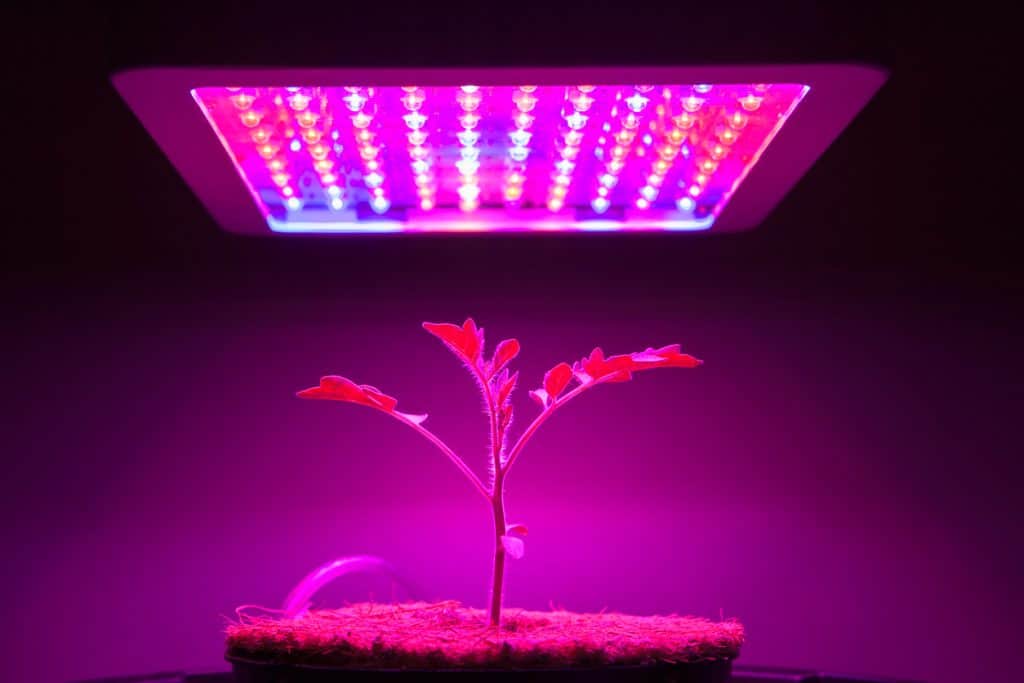
· This FECiDA 600W LED Grow Light is a great place to start.
· If you’re looking for something much bigger and more efficient, something like this KINGLED 1000W LED Grow Light could be right for you.

8. A Timer
Although this might be one item you could probably do without if necessary, having a timer or timer plug is very useful. A timer plug is simply a device that you plug into your electrical outlet, which incorporates a timer. This then allows you to set times of day so that your lights automatically turn on and off.
This removes the need for you to constantly be home whenever you need to turn the lights on or off. This is especially important for the flowering stage of your cannabis plants.
The reason we say this is because in the vegetative state, many people provide their plants with 24 hours of sunlight every single day without ever turning the lights off. However, to cause flowering to occur, you need to change the light schedule to 12 hours of light and 12 hours of dark.
Furthermore, if you want the best possible results, being extremely precise with this timing is essential. Therefore, having a timer to remember when to turn the lights on and off for you can be very beneficial. If you forget to turn the lights on or off too many times, it can seriously affect the overall growth of your cannabis plant.
9. Temperature Control
In order for cannabis plants to grow properly, they also need to be in the right temperatures. If you are growing cannabis indoors, you want to aim for a temperature between 68 degrees and 77 degrees in the vegetative state.
However, during the flowering stage, this can be a little more diverse, with the ideal temperature range being between 65 and 85 degrees Fahrenheit. Therefore, you need to have the right tools to control the temperature in your growing environment.
Of course, if you’re growing outdoors, this is totally out of your control. However, if growing in a closet, tent, or a small room, you absolutely need to control the temperature. In which direction you need to move the temperature really depends on where you live and ambient conditions.
Maybe you live in a very cold area, which means that you will need a heater, or maybe you live in a very hot area, which means that you’ll need an air conditioning unit. Either way, you need to find a way to achieve the appropriate temperature, whether you need to heat or cool the space.
· If you need a unit to cool the grow space down, something like the Wamife 12000 BUT Portable AC Unit could be just what you need. Some intake and exhaust fans can come in handy too, because have good airflow is important to grow cannabis.
10. Humidity Control
Almost as important as the temperature is the humidity. You don’t want the air being too dry or too humid for your weed plants, as both of these situations can cause problems to occur.
Therefore, in general, you want to aim for a humidity level anywhere between 40% and 60% while growing the plants, and below 40% in the couple of weeks before it is time to harvest.
Once again, just like with temperature control, whether you need to add moisture into the growth space or remove moisture depends on where you live, the climate, and kind conditions.
It may be the case that you need a dehumidifier to dry the air out a little bit, or a humidifier to add some moisture into the air. young plants are susceptible to humidity issues, which can spell trouble as far as a healthy root system is concerned, so take caution!
11. A Thermometer-Hygrometer
We’ve done a lot of talking about the temperature and humidity level inside of your growth space. Well, you need a way to keep track of these things, or else you have no way of knowing what the current conditions are like.
The easiest way to do this is with a simple combination of thermometer and hygrometer. A thermometer keeps track of the temperature and a hygrometer keeps track of the humidity level. This doesn’t have to be anything overly fancy as long as it works.
12. pH Testing Equipment + pH Adjusters
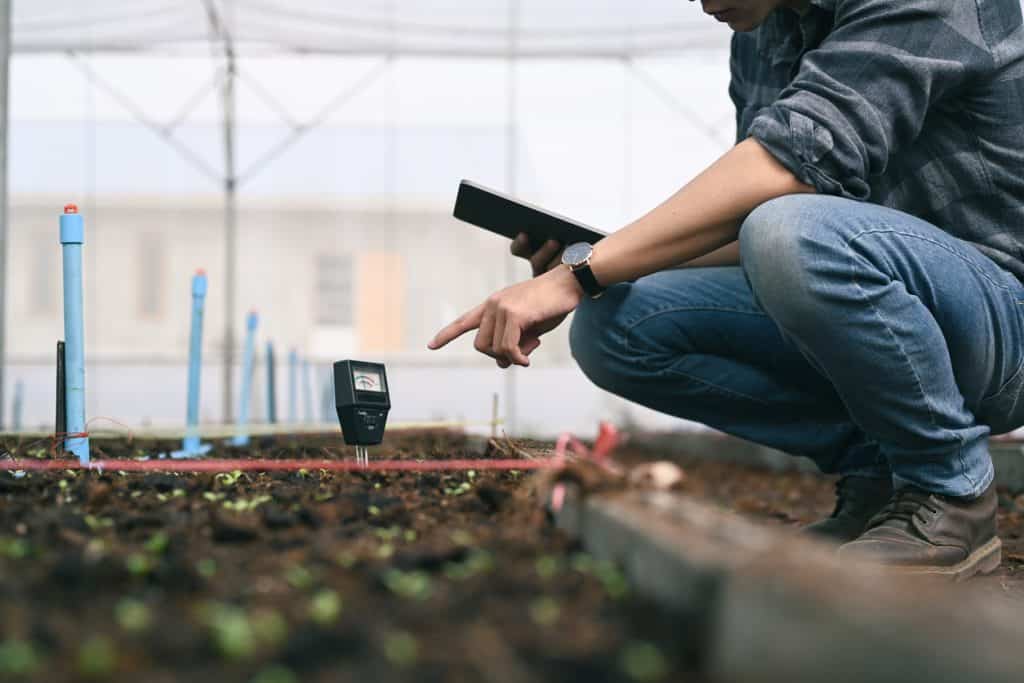
One of the most important things you need to keep in mind for the health of your plants is the pH level of the soil, otherwise known as the acidity level. Cannabis prefers slightly acidic soil, although it can tolerate a wide pH range, anywhere between 5.0 and 7.0. However, the optimal pH range for weed plants is between 5.8 and 6.2, which is very slightly acidic.
Keep in mind that a 7.0 is totally neutral. Without the proper tools, there’s no way for you to know what the current acidity level is like. This means that you need a pH testing kit. You have two options here, testing strips which are one-time use and have to be thrown out after, or an electronic pH tester.
An electronic pH tester is quite expensive, although they also last for many years, as long as you take good care of them. That said, some people have trouble calibrating these, in which case a single use pH testing strip might be best for you. Those plant roots will thank you!
You’ll then also need the proper chemicals to adjust the pH level depending on what your findings are. There are chemicals that can raise and lower the acidity of the soil. If the pH levels are not within the ideal range, using these pH adjusting products is necessary for the health and survival of your plant.
13. Airflow
Cannabis plants always do well with air flow. First, air flow is beneficial for helping to control both humidity and temperature levels. Perhaps even more important, air flow helps to strengthen your cannabis plants.
Forcing your plants to constantly fight against a bit of wind, not too much wind, just a little bit, helps to strengthen their stems and stalks.
This is almost like weight training strengthens your muscles. Always having to resist wind causes those plant stems to grow thicker and stronger.
14. Odor Control

It’s no secret that weed plants can get very smelly, especially once they start to flower. Although releasing an odor is not always an issue, maybe you live in an area where you don’t want other people smelling that righteous cannabis.
If this is the case, you may want to get some sort of air filtration unit. For instance, black carbon filters help remove a lot of odor and contaminants from the air. Setting up a carbon filter ventilation system takes a good bit of work and money, although it is worth it for many people.
If you plan on growing weed on a regular basis, then investing in a good air filtration ventilation system is worth considering. Although, if you’re only growing one or two plants in a small grow tent, it may not be worth it.
· This VIVOSUN Air Filtration Ventilation Kit is a perfect option for those looking to set up an odor-free grow space.
15. A Grow Tent or Dedicated Space
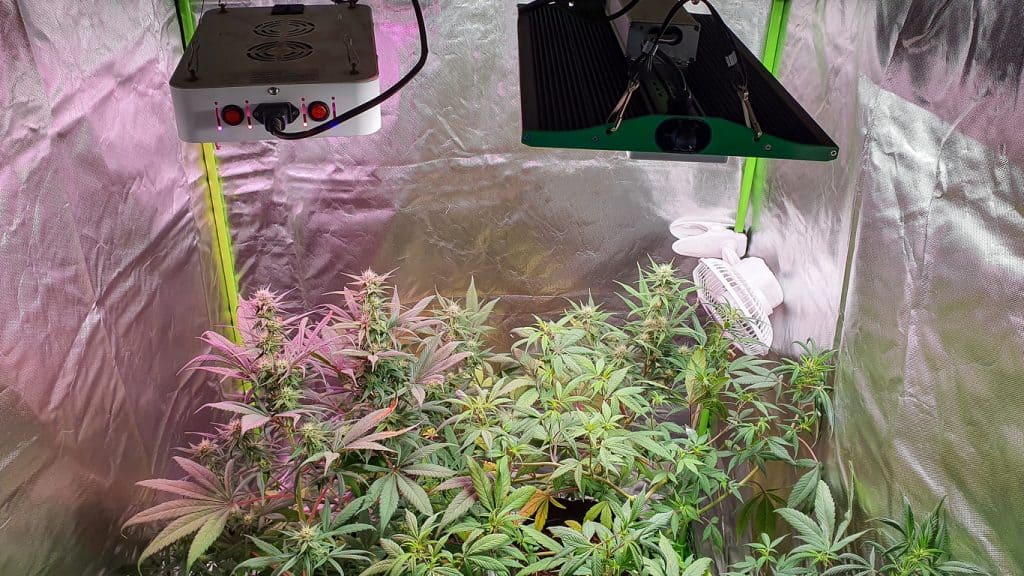
Of course, you also need to have a space to grow your cannabis in. Having a dedicated space is ideal because it allows you to control the environment precisely. Even better is if you have a grow tent, particularly if you are only growing a few plants.
Having a grow tent provides you with a very small space that makes the environment very easy to control. The smaller the space, the easier the environment is to control. Furthermore, most grow tents come with special reflective linings on the inside to help increase the effectiveness of your lighting units.
They usually also come with vents for air flow as well as hangers for your lights, and other features as well. The only thing for you to decide is what size of tent you need. Keep in mind that most cannabis plants require at least two-by-two feet of space, with many requiring up to four-by-four feet of space.
· The iPower GLTENTXS3 is a great place for beginners to start with.
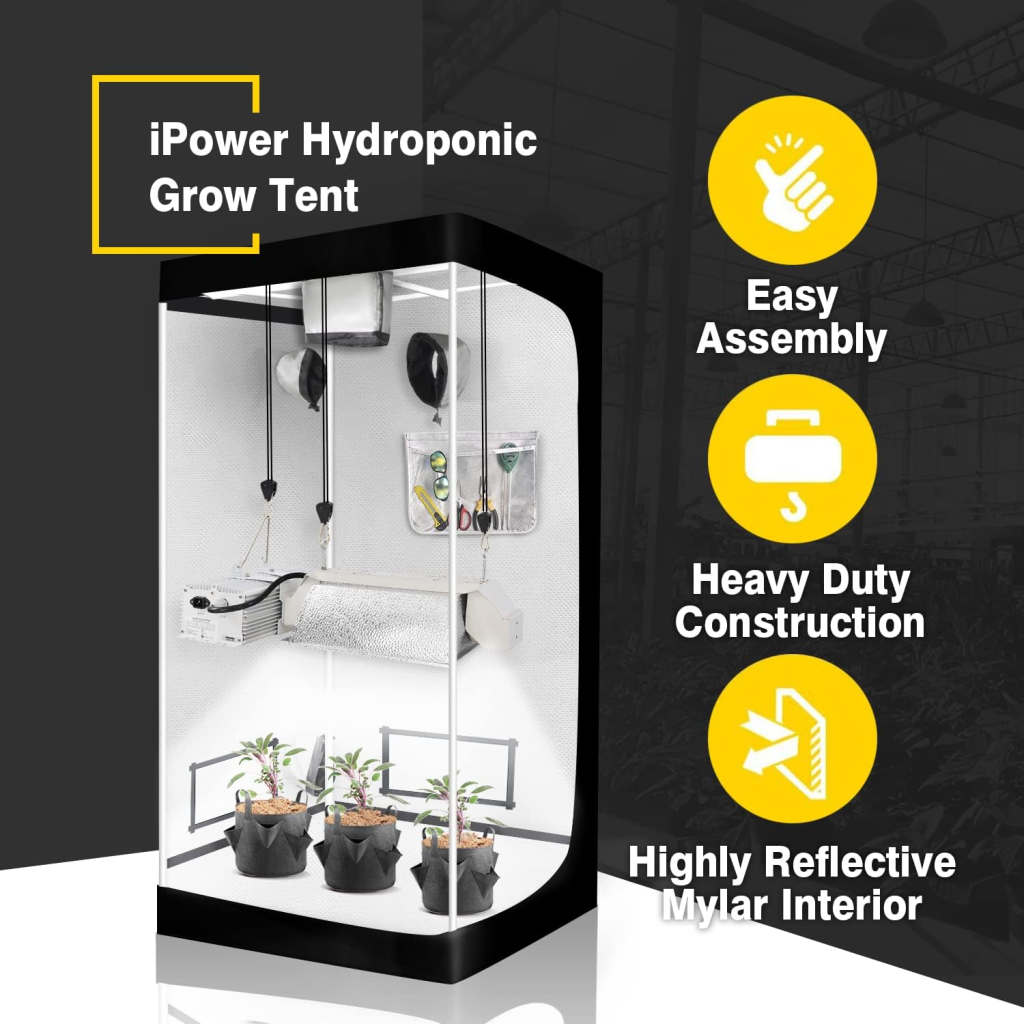
Conclusion
Although the list of items that you need to grow weed at home seems quite substantial, once you purchase most of these things you’ll have them for many years to come.
Things like heaters, air fans, grow tents, lights, buckets, and more can all be reused time and time again.
The bottom line is that if you take care of all of the needs of your weed plants, then you should be able to generate very high yields of high potency buds.

